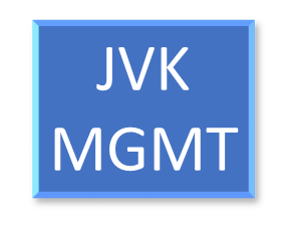From Police Precinct To Medical Frontlines
/By Jano Tantongco
jtantongco@longislandergroup.com
Suffolk County Police Department Chief Surgeon and Medical Director Dr. Scott Coyne was honored for his work in melding the worlds of law enforcement and medicine to create the Suffolk County Police Department’s Medical Crisis Action Team and spearheading its much-lauded Narcan program.
Dr. Scott Coyne, of Lloyd Harbor, who was recently honored at both state and county levels as a physician of excellence, remembers the turning point for when he was propelled beyond the walls of a hospital and into the world of first responders.
It was a foggy January night in 1990, when Avianca Flight 52 was headed to New York from Bogota, Colombia. As it made its way to John F. Kennedy International Airport in Queens, it ran low on fuel.
As the pilot initiated the landing, the heavy fog forced the plane to turn around and make a second attempt. Soon after, air traffic controllers lost contact with the plane.
Flight 52 had crashed 15 miles away from JFK in a wooded area in the Village of Cove Neck. Dr. Scott Coyne, the freshly minted chairman of radiology at Glen Cove Community Hospital, got the call and raced to the hospital to assist taking in victims.
However, on the way there, Coyne saw flares marking the scene. Seeing his medical license plate, a police officer waved him down.
“They put me in the back of a police car and shot me down to the scene. I was the first doctor there,” Coyne said.
Upon arriving, he immediately set up a makeshift triage to handle the immense volume of injured passengers.
He went to an ambulance to send out a call for further, life-saving supplies. Unaware of who Coyne was speaking to, the ambulance driver handed him a phone and he “rattled off about 20 things,” including splints, morphine and IV poles, but received no response.
Unsure if his critical transmission made it through, he continued treating patients. Eventually the supplies and personnel eventually trickled into the disaster scene, a boon to the injured.
In the aftermath, 65 of the 149 passengers were killed, along with eight crew members. Eighty-five survived the crash.
Coyne, who arrived around 10 p.m., stayed at the scene until around 5 a.m. He made his way into the hospital the next day at 9 a.m.
The hospital’s chief of medicine called him in to thank him for his performance that night. But, Coyne had no idea how he had found out about it. The chief told Coyne he was on page two of that morning’s issue of The New York Times.
“While we were waiting, suddenly over the medcom speaker, we hear you saying what you need right from the scene,” the chief told him.
With the gear Coyne requested, four surgeons from Glen Cove Community Hospital rushed to the scene with police.
“They had to walk the last 3 miles because it was all blocked up with cars,” Coyne said. “We couldn’t get ambulances in or out. I had all these victims and I had no ambulances.
“That situation got me into my first responder mindset of how important it is to be on scene in the most rigorous conditions to save lives.”
Coyne was recently honored by the New York State Department of Health and the New York State EMS Council as this year’s Physician of Excellence for New York State EMS. On the county level, he also received the REMSCO 2015 EMS Physician of Excellence Award for Suffolk County.
Two years after the jet crash, Coyne was appointed as Suffolk’s first police surgeon, also soon earning the title of medical director for the police academy.
“The Suffolk County Police Department is fortunate to count among its assets the expertise and knowledge of Dr. Scott Coyne,” Suffolk Police Commissioner Timothy Sini stated. “Since his start with the department, Dr. Coyne has facilitated the implementation of life-saving programs that have helped improve the safety and well-being of Suffolk residents.”
In 2008, he created the Medical Crisis Action Team (MEDCAT), a tactical medical team of police officers who are trained as advanced life support paramedics and critical care EMTs. He said he was partly inspired by the tragedy of the 9/11 attacks, to which police, firefighters and medical technicians were first responders.
The 30 MEDCAT members train once a month at the Yaphank Police Academy in rescuing and giving care under fire to bridge the world of police and medicine.
“It’s like a medical SWAT team. It’s not just a fast response, which is very important… we’re all cops,” Coyne said. “We go in with guns drawn to get the bad guy… at the same time, then we start the care.”
Coyne was also a former police officer with the Village of Lloyd Harbor for eight years, from 1969-1977. Meanwhile, he was studied medicine during the last four years of his career.
After an internship and residency at the Medical College in Virginia, he worked in emergency medicine there in the early 80s, eventually coming back home to start his 20-year-career at Glen Cove Community Hospital in diagnostic and interventional radiology, eventually becoming chairman.
In 2012, Coyne also spearheaded the SCPD’s Narcan program to address the epidemic of opiate overdoses. In conjunction with New York State, he established the pilot program in August in three precincts, initially training 400 officers to administer the opiate antidote.
By the end of the year, the department had recorded about 50 successful saves in overdose incidents.
The program was soon also rolled out in all seven of Suffolk’s precincts. To date, Coyne said there’s been about 670 saves. In 2014, then-U.S. Attorney General Eric Holder recognized the program as a model for Narcan deployment for municipalities throughout the country.
In 2015, in conjunction with the police department’s community relations bureau, Coyne introduced “The Ugly Truth,” a public educational program designed to heighten awareness and treatment of victims of the opiate epidemic.
“When a child dies… it affects not just the family, which is devastated, it affects their friends, friend’s families, schools, the community,” Coyne said. “We’re trying to get to the root of the problem in ‘The Ugly Truth’ by doing community outreach and education to try to stop somebody from using heroin.”






